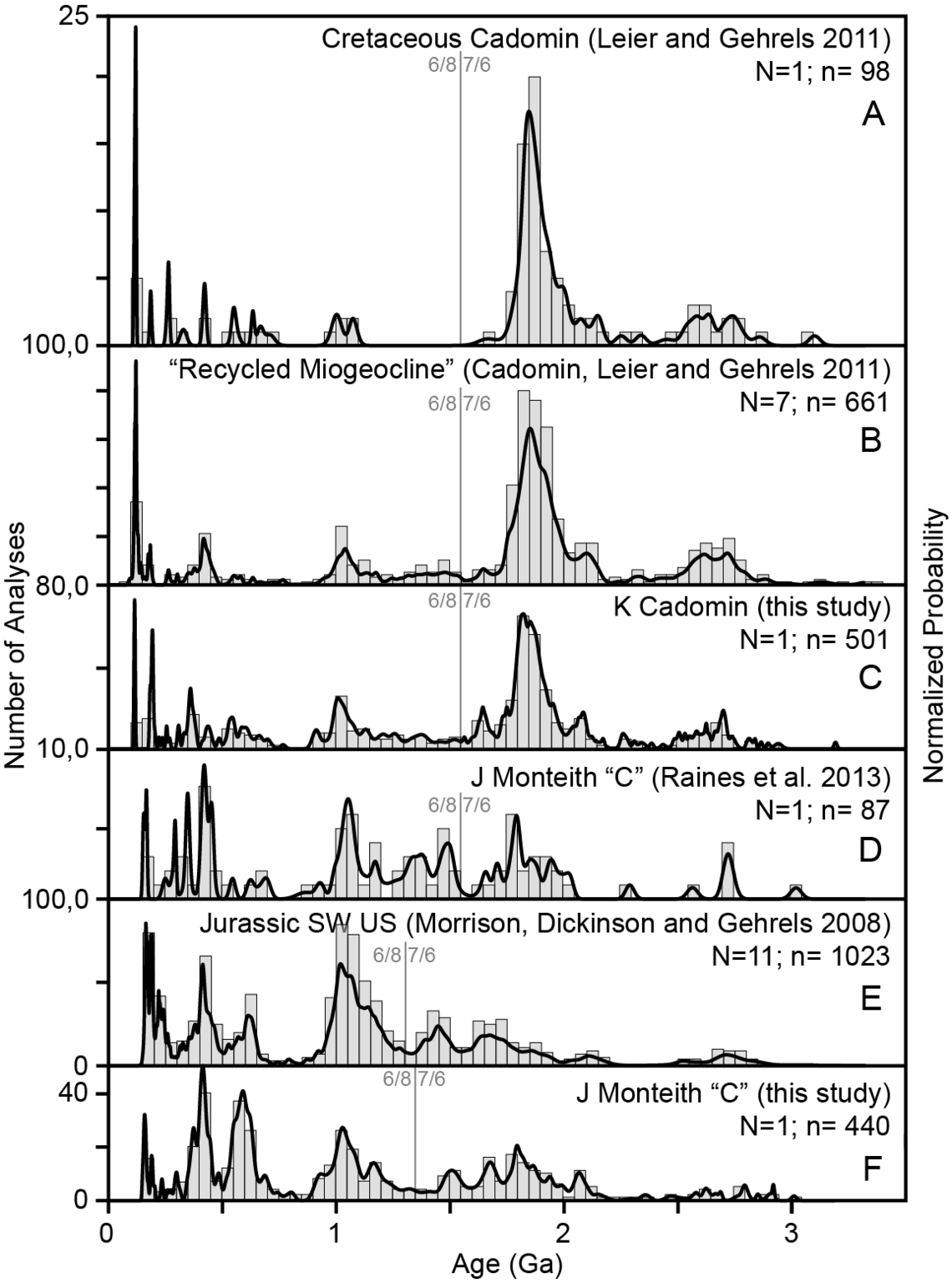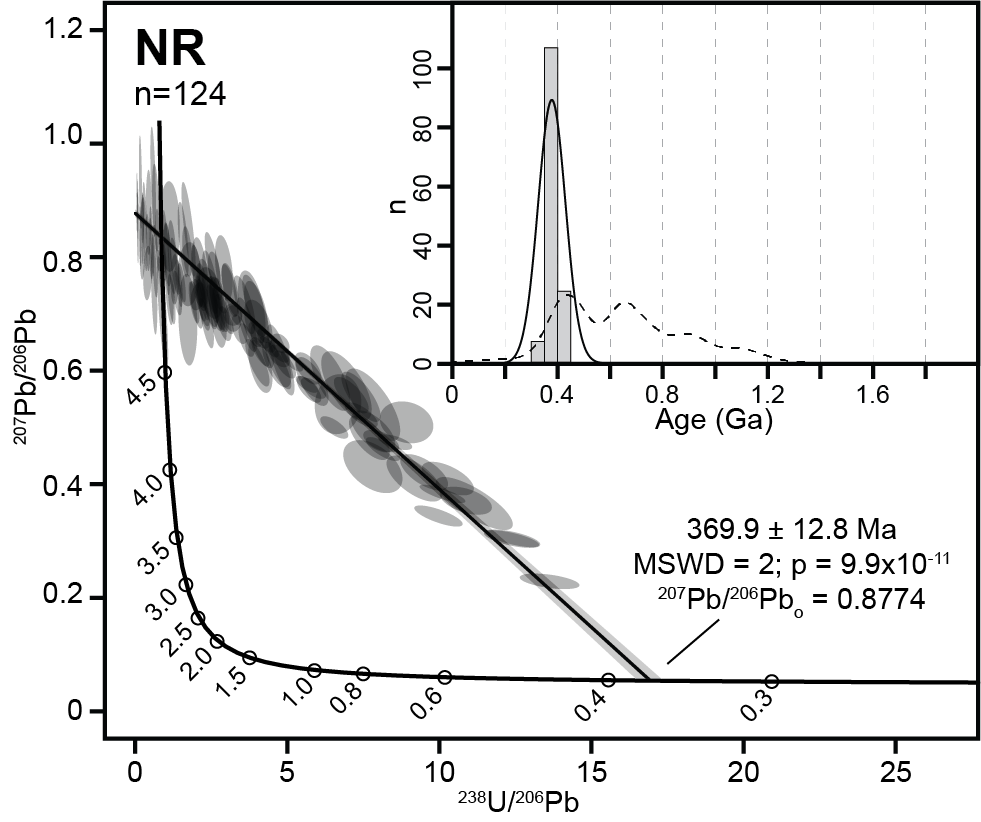
U-Pb Dating
A useful technique for high-temperature processes
Basics of U-Pb Dating
U-Pb dating is a foundational tool for understanding the timing of geological events. The long half-life of uranium and its incorporation in a wide variety of datable minerals make it ideal for constraining events in deep time. In our lab, we focus on U-Pb dating of zircon and apatite, which are common accessory minerals in many rocks. While U-Pb dating of zircon provides information about very high temperature events like the crystallization of a magma or some metamorphism, apatite U-Pb data can be used to constrain mid-crustal processes.
The application of laser ablation to U-Pb dating has revolutionized geochronology. By drastically reducing the cost of dating a mineral grain (~1$/date is achievable) the method has expanded the number of measurements that can be obtained from a sample and the number of samples that can be measured in a project. Moreover, spatially resolved sampling of materials enables complex petrogenetic histories of minerals to be deciphered. While the ultimate accuracy of LA-ICP-MS systems is poor compared to other techniques (~1.5% for LA-ICP-MS compared to <0.1% for ID-TIMS) it is sufficient for many applications.
LA-ICP-MS Dating of Zircon
Our lab uses a variety of zircon U-Pb dating methods in both detrital and basement (crystalline) research. For detrital zircon dating we focus on cost-efficient data acquisition using large-n measurement methods. Our most commonly employed method is outlined in Matthews et al. (2017)(Geostandards and Geoanalytical Research). By this method we normally measure 300 grains per sample at a rate of about six samples per day. For other projects, where larger-n is required to find rare near depositional age grains, we measure 660 grains per sample using a shortened ablation period. This method is outlined in Daniels et al. (2017)(Geological Society of America Bulletin).
Both of these techniques use conventional polished grain mounts to present the sample to the laser. We also employ a novel laser-ablation depth-profiling measurement method to extract information from thin zircon overgrowths. By this method, whole grains are mounted to tape and surface-consistent layers of material are dated starting at the exterior of the grain and moving toward the middle of the grain. This method allows for the rapid collection of large datasets of core and rim dates and has applications in metamorphic rocks or detrital zircon grains derived from them.
LA-ICP-MS Dating of Apatite
Dating of apatite is complicated by low U concentration and the incorporation of common Pb during crystallization. We use the Madagascar apatite standard and the Iolite software package to measure both detrital and basement apatite samples. Apatite dates for basement rocks inform about mid-crustal cooling and can be useful in constraining exhumation histories. Detrital apatite can be used as a constraint on provenance and can be particularly useful if combined with LA-AHe dating techniques (double dating).

Comparison between data generated using our n = 300 methodology and heritage data from Arizona Laserchron. Large-n datasets better reproduce the source area DZ signature.

Detrital apatite from a modern river in the Appalachian Mountains. U-Pb isotopic system was reset by metamorphism. Zircon from the same sample yield a wide range of U-Pb dates.
